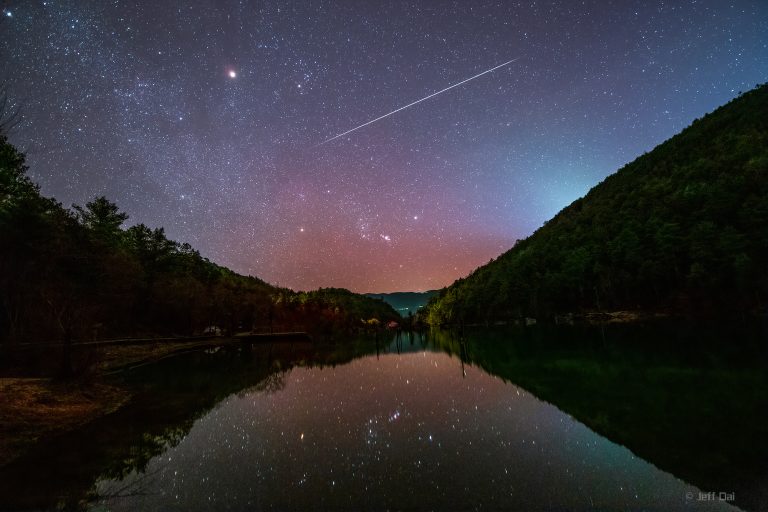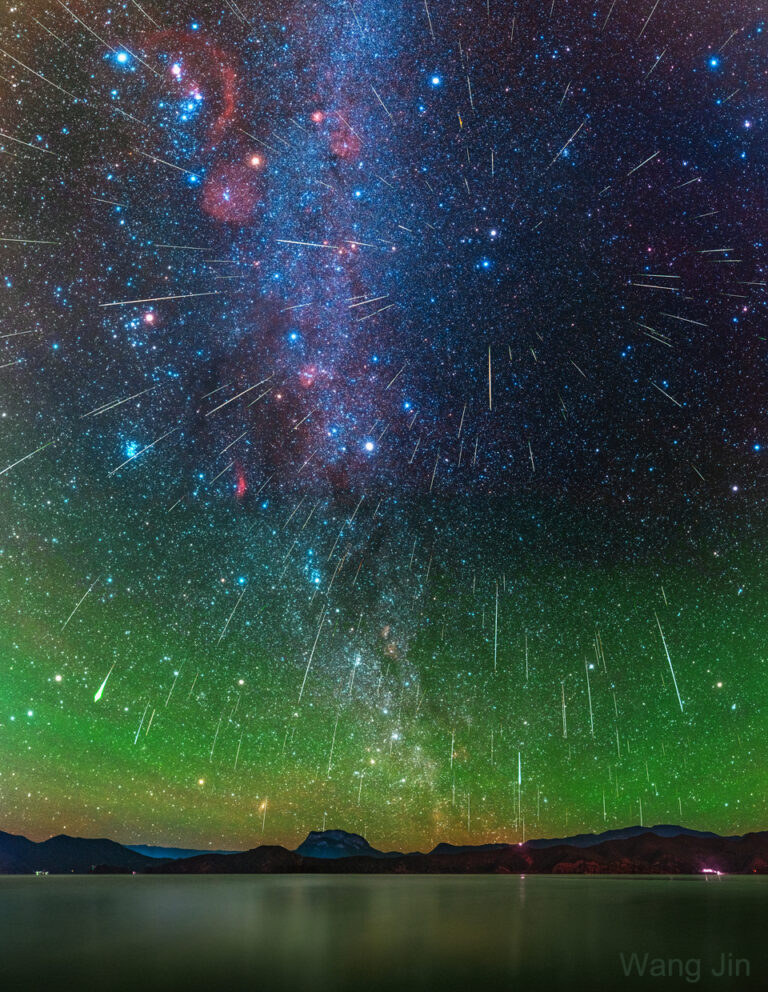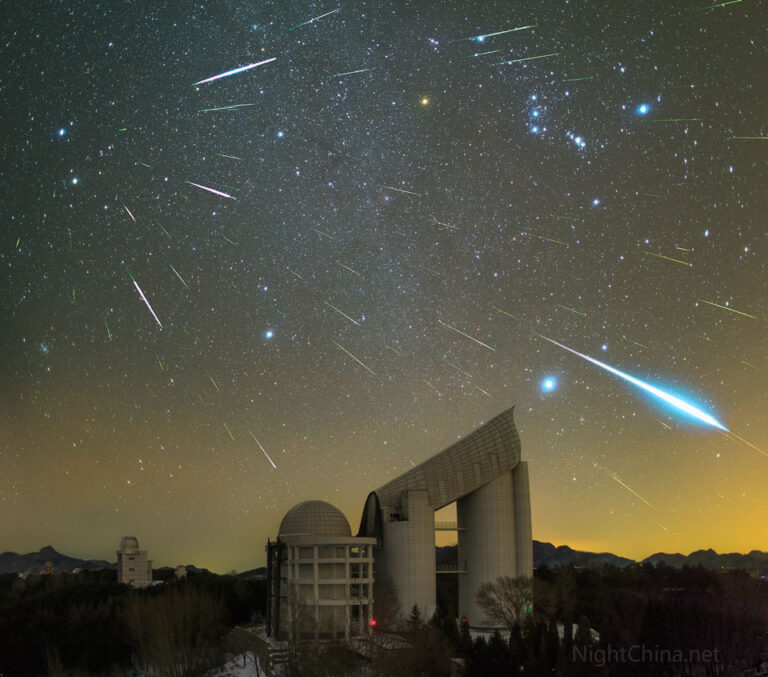双子座流星
2022年12月16日 The Geminid Image Credit & Copyright: Jeff Dai (TWAN) Explanation: Returning from beyond the Moon, on December 11 the Orion spacecraft entered Earth’s atmosphere at almost 11 kilometers per second. That’s half the speed of the grain of dust that created this long fireball meteor when it entered the atmosphere on December 13, near the peak of the annual Geminid meteor shower. As our fair planet makes its yearly pass through the dust trail of mysterious asteroid 3200 Phaethon, the parallel tracks of all Geminid meteors appear to radiate from a point in the constellation Gemini. But the twin stars of Gemini hide just behind the trees on the left in this night skyscape from the beautiful Blue Moon Valley, Yunnan, China. Reflected in…




